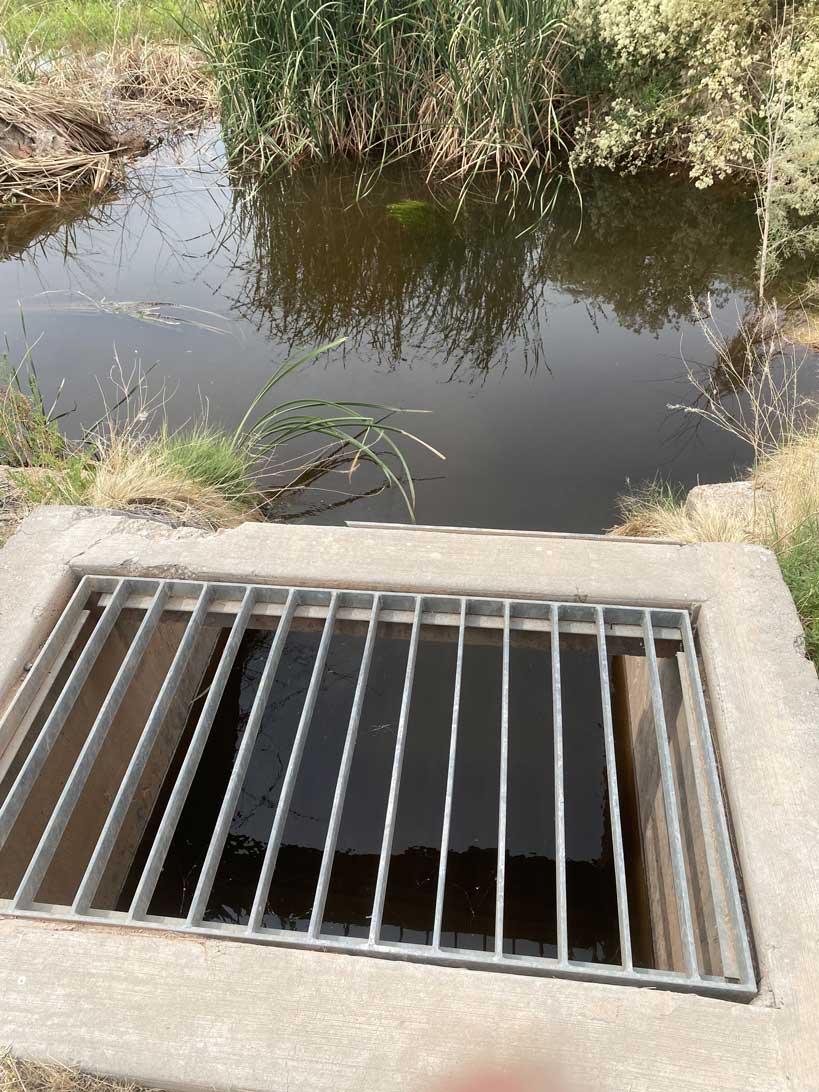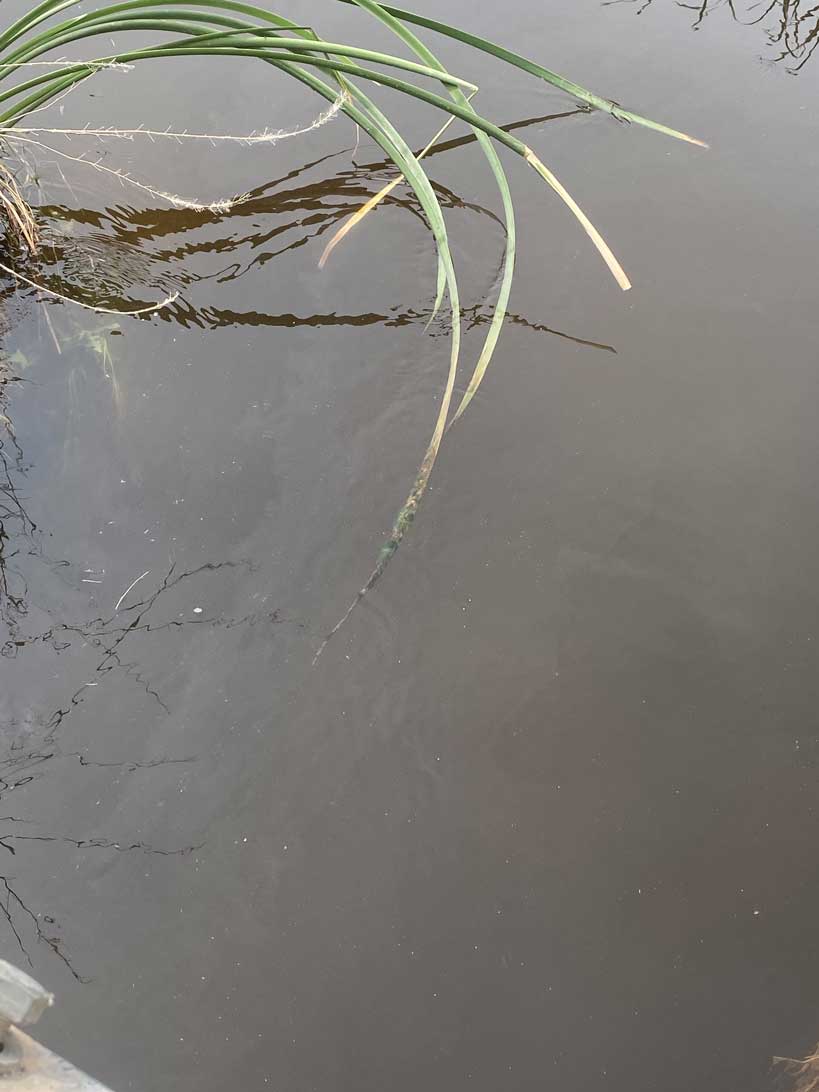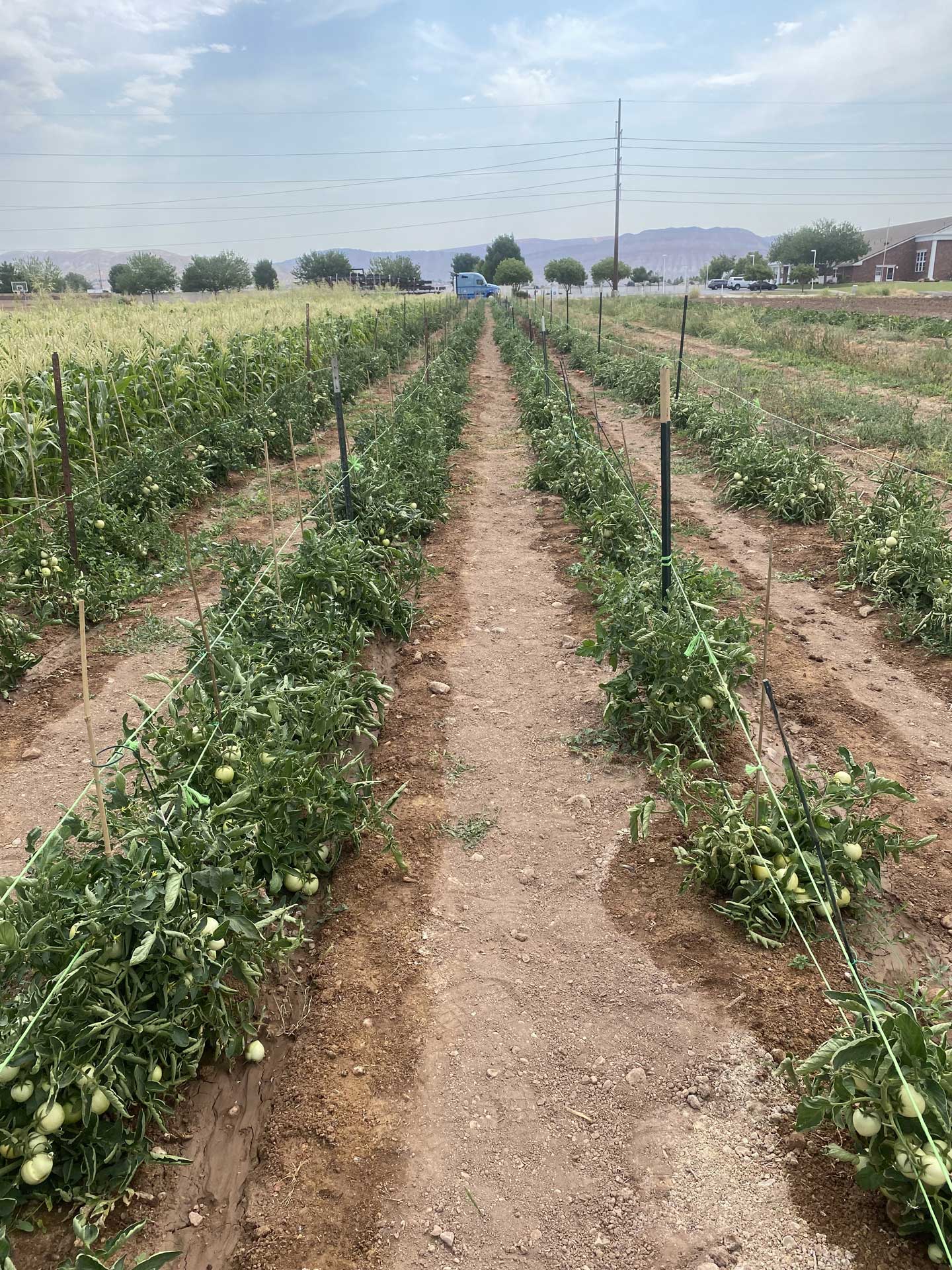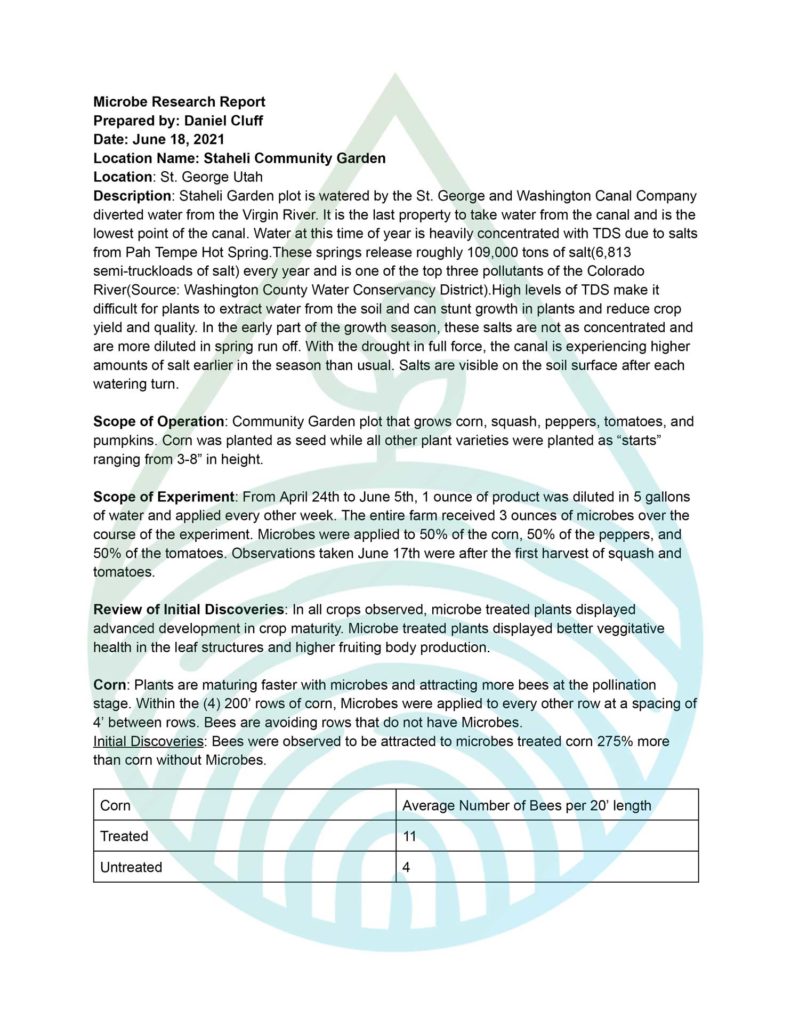Climate:
St. George Desert, Upper Mojave Desert, Drought, Poor Soil, Poor Water, High TDS/Alkalinity
Story:
Dates: April 24th thru June 5th 2021
Application Process: 1 ounce of product was diluted in 5 gallons of water and applied every other week. The entire farm received 3 ounces of microbes over the course of the experiment. Microbes were applied to 50% of the corn, 50% of the peppers, and 50% of the tomatoes.
Corn
Plants matured faster with microbes and attracted more bees at the polination stage. Within the four 200-foot rows of corn, Microbes were applied to every other row at a spacing of 4 feet between rows. Bees avoided rows that did not have Microbes.
Initial Discoveries: Bees were observed to be 275% more attracted to microbes-treated corn than the untreated corn
Tomatoes
Plants matured faster with Microbes and grew better in high TDS conditions. Tomato plant leaves were “curling” or their leaves were folding from the outside edges to the center of the leaf due to the absorption of the salts as they matured. Plants were observed to produce leaves based on the impact of TDS salts, causing leaves to curl. Numbers were based on the average of every 20 feet of tomato plants along four 200-foot rows of tomatoes. Observations were taken two hours after the first harvest and tomatoes were removed from the property before harvest counts and weights could be measured. Despite lack of measurement, it was observed that more tomatoes were harvested from the rows treated by Microbes.
Initial Discoveries: Microbe-treated plants grew 35% fewer leaves. Of those leaves, microbe-treated plants were observed to have 234% more open leaves than the untreated row. The treated plants also displayed 236% more flowering clusters. Plants appeared to mature faster with the Microbe treatments.
Open leaves = more energy!
Plants with our microbes had better photosynthesis! Plant leaves are like solar panals. Even though there were less leaves, more of those leaves were collecting energy for photosynthesis.
Peppers
Plants matured faster with Microbes and produced more flowers and buds. Pepper plants were also observed to range more in size from plant to plant. Less pest damage was observed throughout the microbe-treated crop as well.
Initial Discoveries: Plants matured faster with microbes and produced 195% more fruiting bodies on average. Untreated plants displayed more pest damage to leaves, ranging from 225% more in spants smaller than 10 inches up to 900% more in plants taller than 10 inches.
More Stable Root Zone:
Temperatures in the root zone were more consistent
Crop Advancement:
Double yield in tomatoes, potential triple yield in peppers.
Observations





